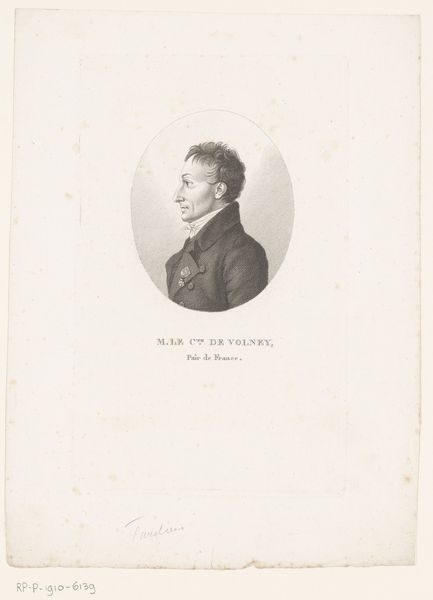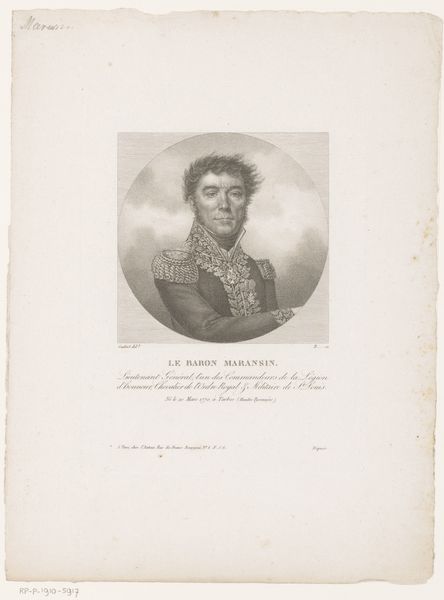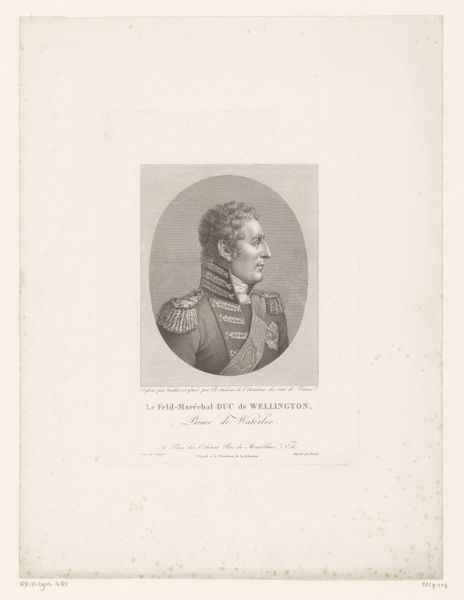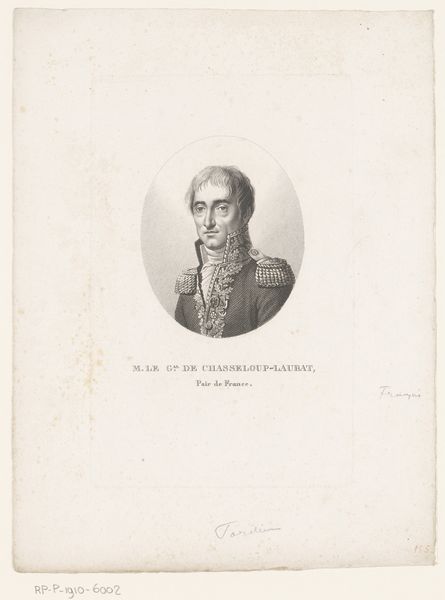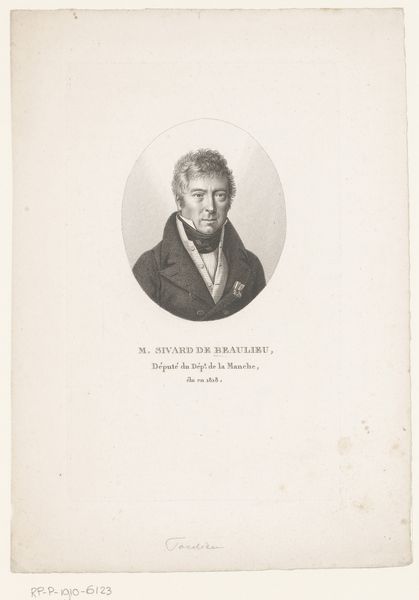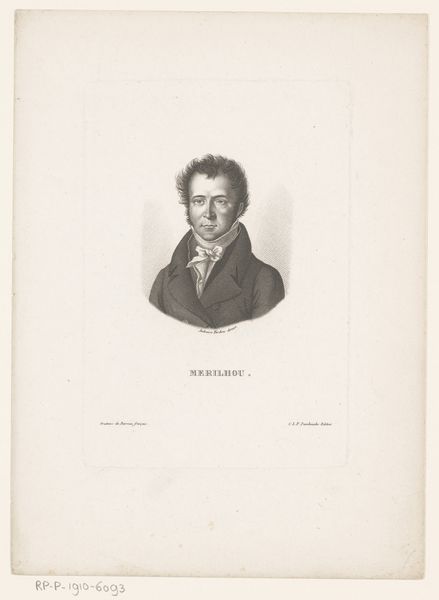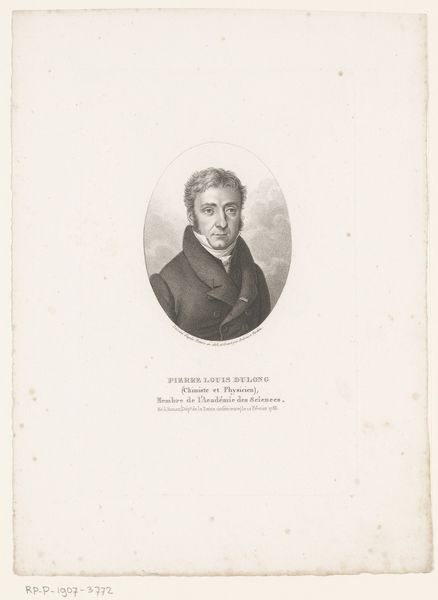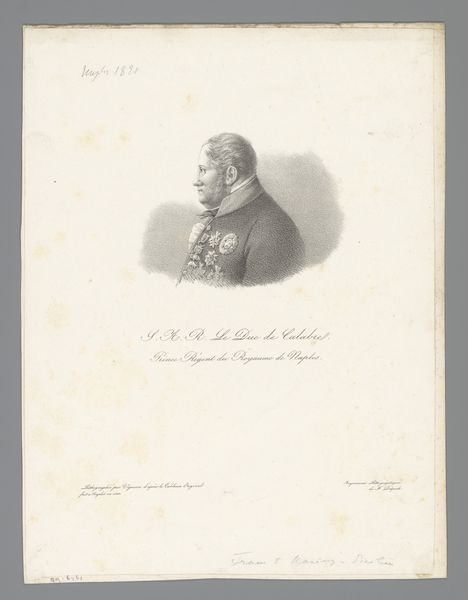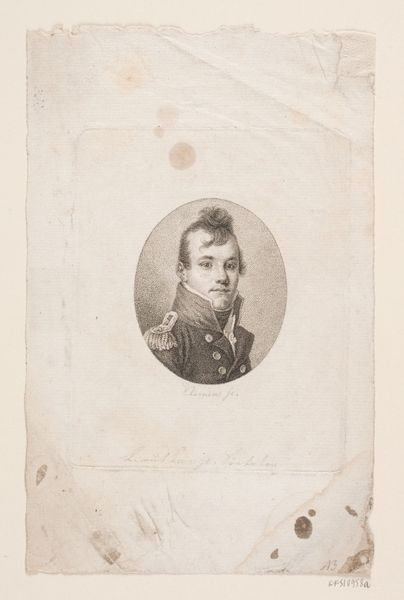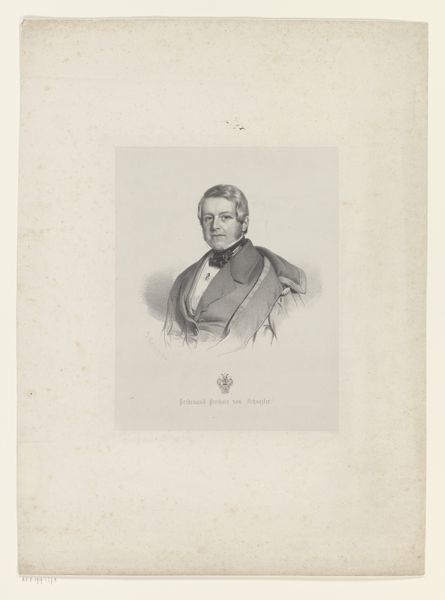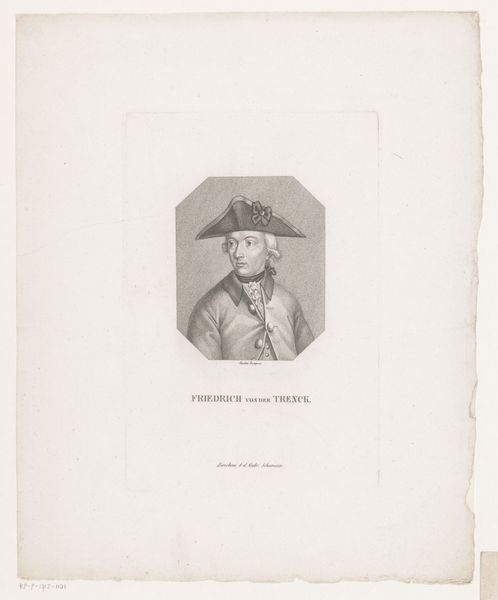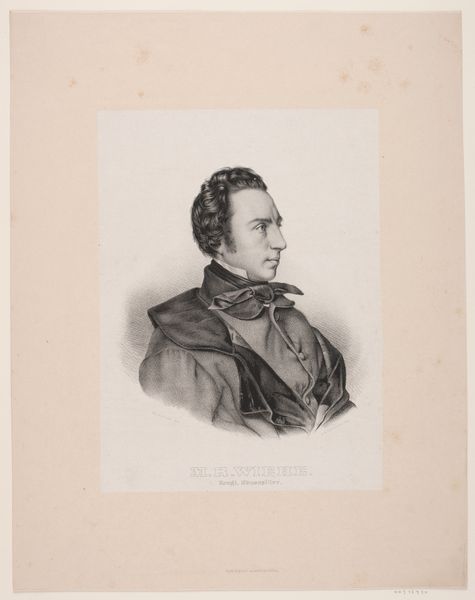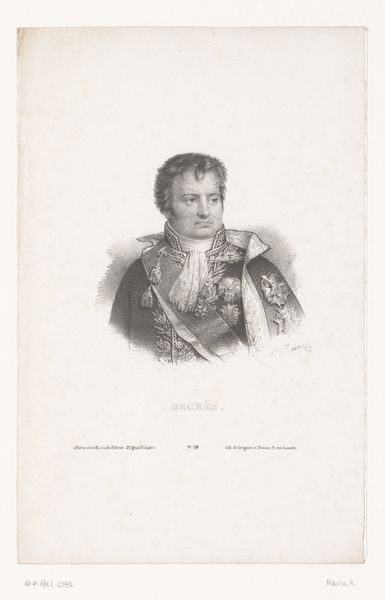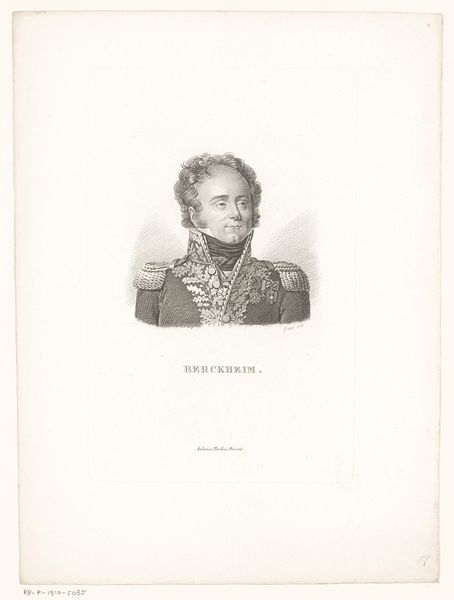
paper, engraving
#
portrait
#
neoclacissism
#
old engraving style
#
paper
#
engraving
Dimensions: height 212 mm, width 137 mm
Copyright: Rijks Museum: Open Domain
Curator: This engraving is a portrait of Baron Clément de Ris, dating from 1820-1821, made by Ambroise Tardieu. The subject exudes a very specific…air of confidence. Editor: My first impression is that this has such an austere formality to it. Look at the way the lines are so precise, yet even within that rigidity you see so much material labor and repetitive action. What does his adornment symbolize? Curator: Ah, yes, the man himself. The subject is framed by an oval, cutting just above his shoulders and displaying all of his various medals and regalia. I notice that the badges denote social and political recognition that communicate deeply held French societal values of honor, status, duty. The crispness reinforces the period’s taste for neoclassicism, that yearning for antiquity. Editor: Those crisp lines really underscore the social distance embedded in such portraiture, especially when achieved by the intaglio of engraving! The artist had to directly manipulate the material, translating the body and its societal roles into sharp, reproducible marks. Imagine the hours etching into the copper or steel. What do we know about Tardieu? Curator: Tardieu was an established engraver, portraitist and cartographer in France at that time, part of an intricate and complex production machine. We know that he reproduced several other portraits. It could mean that he received special patronage from the establishment in this period. I wonder, how accessible would this image have been? Editor: That's key. Was this commissioned privately for his family, or created for broader public consumption? This influences the amount of labor that was to go into it as it determined the scope. You know, that medallion looks stamped, probably assembled through an industry of courtly manufacture and political clout. Curator: Exactly. All these questions about access really shift how we view what the emblems represent, as social values or maybe as just aspirational performances. Editor: I'm struck by how much more the physical existence of the engraving process shows us the performance of power and the realities of social standing at this time. Thanks for opening my eyes! Curator: Indeed, by carefully reading these symbols together we can think about cultural meanings. Food for thought!
Comments
No comments
Be the first to comment and join the conversation on the ultimate creative platform.
